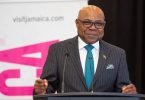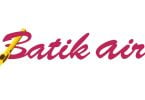A popular sightseeing destination in Australia is boldly going where no tourist attraction has gone before – by offering audio tours in the Klingon language.
Starting August 22, Star Trek fans and those who are fluent in Klingon can visit the Jenolan Caves National Park and take a self-guided audio tour in Klingon through the “Nettle Cave.”
Currently offering audio tours in eight languages, Nettle Cave is part of one of the oldest cave systems in the world and has about 150,000 to 200,000 visitors annually, making it one of the most visited caves in Australia.
“We thought it would be neat to add another language, perhaps a fictional one,” says David Hay in charge of Cultural Initiatives at Jenolan Caves. “We considered adding dwarfish or elfish, but then decided to add the second most spoken fictional language in the world after Esperanto, which is Klingon.”
Hay says the language addition isn’t completely out of the blue. In the early 1990s, two writers of “Star Trek: The Next Generation” visited the caves and decided to name a transport vessel, the USS Jenolan, in the 1992 episode, “Relics.”
In July, two Klingon scholars — Michael Roney Jr. and Tracy Canfield — visited the caves from the United States and translated the current English audio tour of the caves into Klingon and recorded it in a Sydney studio.
Speaking in the Star Trek language, Roney exclaimed “lH, qar’a'”? when he first visited the caves to express their beauty, according to a statement released by Jenolan Caves Reserve Trust.
The Klingon language was first created in 1979 for “Star Trek: The Motion Picture.” by James Doohan, who played Scotty in the sci-fi series. Star Trek producers later consulted linguist Mark Okrand to develop the language for “Star Trek III: The Search for Spock” and subsequent other films.
The “Klingon Dictionary” created by Okrand went on to sell hundreds of thousands of copies over the years. Currently, the Klingon Language Institute has an estimated 2,500 members in 50 countries.
“What I think is happening is that people are very interested in the language and we have created a portal into it,” says Hay. “This is an opportunity for others to listen to Klingon and make it available for those who interested in it.”






















